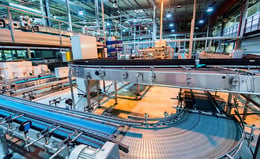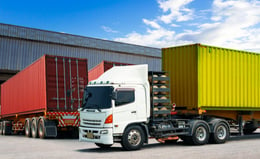Are You Building Your Supply Chain on Outdated Technologies?
Nancy Sarpolis - April 19, 2022

Today’s supply chain managers face a barrage of disruptions from external sources such as raw material and labor shortages, snarled logistics and rising costs. But in some cases, the bigger challenge may come from inside the organization. “Many supply chains are built on outdated, legacy technologies,” according to Accenture. “They’re essentially analog machines trying to solve problems in a digital world.”
In a recent Reuters survey of nearly 400 supply chain executives, more than 55% of respondents still use manual process to make planning decisions, with 28% saying their entire decision-making process lacks any systems support. Common problems include:
- Siloed systems that do not integrate with others
- Planning systems that can’t test multiple scenarios or will not allow complex rules and exceptions
- Systems that cannot link warehouse and logistics operations.
The report also showed there is “a desperate need to move beyond legacy systems and institute management and forecasting systems that can work across organizations, especially in the wake of the sudden disruption of COVID-19.”
As it stands right now, most businesses without responsive, adaptable processes tend to rely on static, repeatable processes for most of their planning functions. While organizations tend to experience the same types of disruptions over and over again, the modern supply chain now includes so many variables that it is virtually impossible for a human planner to effectively manage it without powerful digital tools. More flexible and connected processes and systems are becoming increasingly necessary.
The integrated digital supply chain
Digitizing data from spreadsheets and other legacy systems is a first step in building an integrated digital supply chain. Only then can a business begin to use digital technologies to optimize operations. That means harnessing data that’s already being collected—from applications that track incoming orders and materials shipments to sensors that monitor machine usage and inventory levels.
A digital supply chain brings several different planning, production and data reporting systems under the same umbrella and looks at them holistically rather than as individual functions. The more connected every touchpoint on the value chain is to every other touchpoint, the more easily planners can track supply chain activity, generate optimal plans, and ultimately execute those plans in a cost-effective way.
By developing a complete view of every resource within the organization, planners will have the data they need to create an environment in which the right resources can be applied to the right orders at the right time.
Compatibility is key
Any new technology solution under consideration should be compatible with the organization’s other solutions and should easily connect and share information with those solutions. Technologies that can easily be adapted to an organization’s own applications or that interface with existing standard software provide faster, more seamless implementation. Solutions that network together in a flexible, modular way give planners the support they need to better understand what is happening under the hood of the organization. From there, they can leverage new levels of transparency into smarter, more flexible, and more efficient operations.
As growing demand from consumers puts new pressures on today’s supply chains, managers who replace legacy systems with digital technologies will have a sound foundation for building their organization’s future through more accurate forecasts, better decision-making, improved planning, and optimized production.
If you want to learn more get your Guide to Production Planning
In this Guide you will learn:
-
How to build resilience
-
How to increase efficiency
-
How to use integrated APS planning services for production planning
-
What must-have features of an APS solution you need
-
Which KPI’s you can expect
LATEST POSTS
- Understand Circular Economy in The Manufacturing Industry
- How Can Industry 4.0 IT Integration Be Achieved Smoothly?
- The Significance of Order Sequencing in Discrete Manufacturing
- How to improve your Supply Chain Management: The Power of Control Towers
- Optimizing Human Resource Scheduling in Manufacturing: A Technological Approach



